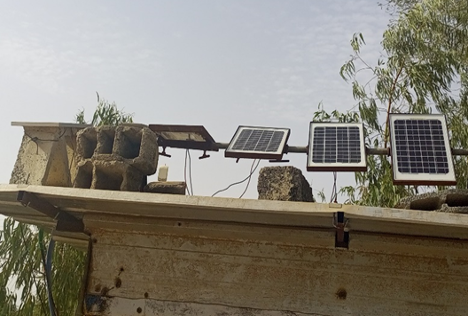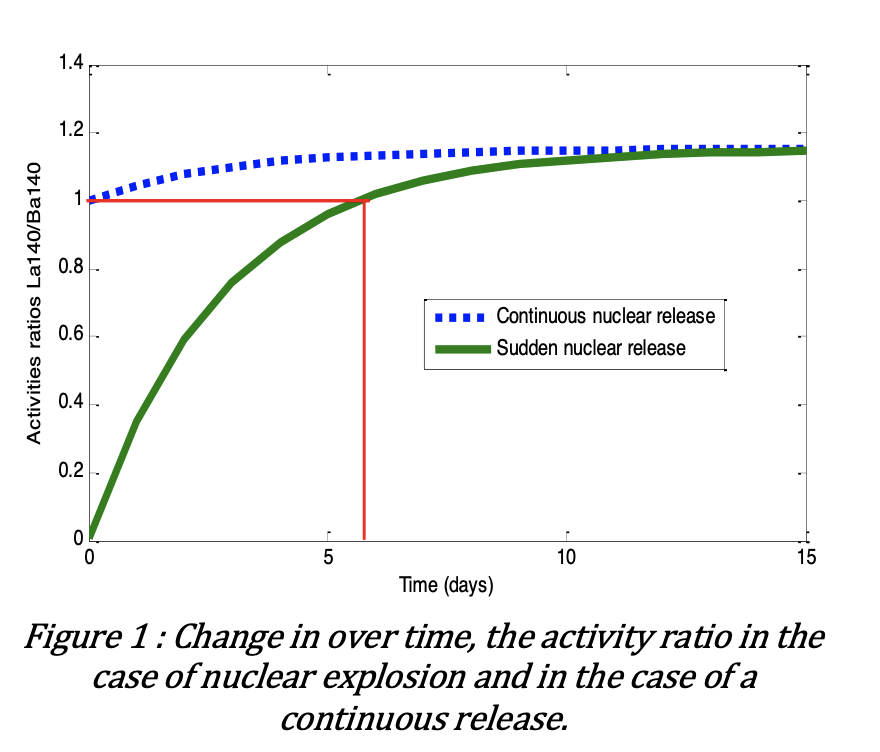Experimental study on the effect of tilt angle and dust fouling on the electrical parameters of PV modules in Bambey, Senegal
- Post by: SOAPHYS-KZ
- 22 novembre 2023
- Comments off


http://dx.doi.org/10.46411/jpsoaphys.2023.014
Section de la parution: Informations de publication
J. P. Soaphys, Vol 3, N°2 (2023) C23N12
Pages : C23N12-1 à C22N12-6
Informations sur les auteurs
Experimental study on the
effect of tilt angle and dust fouling on the electrical parameters of PV modules
in Bambey, Senegal
Cheikh Saliou TOURE*,
Papa Tat Tabara SOW and Senghane MBODJI
Research
Team Renewable energies, materials and laser(2ERML), Alioune DIOP University of
Bambey, Diourbel, 30 Bambey, Senegal
Corresponding author e-mail: cheikhsaliou.toure@uadb.edu.sn
ABSTRACT
This article presents an experimental study of the effect of dust fouling on the electrical performance of a PV module for different angles of inclination in a semi-arid and temperate environment. In this study, five PV modules were installed above the roof of a laboratory at a height of 3.5 m at inclinations of 0⁰, 15⁰, 30⁰, 45⁰ and 60⁰. The exposure time of the modules without cleaning is 6 months between October and April. In order to analyze the performance of the PV modules, the short-circuit current and the open-circuit voltage were measured every 5 minutes. The results in this study showed that the greatest loss of energy production due to dust was noted at the level of the 15⁰ inclination with a percentage of daily loss of the order of 46% compared to the production of this same module in the case where the latter is considered clean.
Keywords : PV modules, tilt angle, dust deposition, current, voltage
RESUME
Cet article présente une étude expérimentale de l’effet de l’encrassement par la poussière sur la performance électrique des modules PV pour différents angles d’inclinaison dans un environnement semi-aride. Dans cette étude, cinq modules PV sont installés au-dessus du toit à une hauteur de 3,5 m à des inclinaisons de 0⁰, 15⁰, 30⁰, 45⁰ et 60⁰. La durée d’exposition des modules sans nettoyage est de 6 mois entre octobre et avril. Afin d’analyser les performances des modules PV, le courant de court-circuit et la tension en circuit ouvert ont été mesurés toutes les 5 minutes. Les résultats de cette étude ont montré que la plus grande perte de production d’énergie due à la poussière a été constatée au niveau de l’inclinaison de 15⁰ avec un pourcentage de perte journalière de l’ordre de 46% par rapport à la production de ce même module dans le cas où ce dernier est considéré comme propre.
Mots-Clés : Modules PV, angle d’inclinaison, dépôt de poussière, courant, tension
Gharakhani Siraki, A., and Pillay, P. 2012. Study of optimum tilt angles for solar panels in different latitudes for urban applications. Solar Energy, 86(6), 1920‑1928.
Guo, M., Zang, H., Gao, S., Chen, T., Xiao, J., Cheng, L., Wei, Z., and Sun, G. 2017. Optimal Tilt Angle and Orientation of Photovoltaic Modules Using HS Algorithm in Different Climates of China. Applied Sciences, 7(10).
Hachicha, A. A., Al-Sawafta, I., and Said, Z. 2019. Impact of dust on the performance of solar photovoltaic (PV) systems under United Arab Emirates weather conditions. Renewable Energy, 141, 287‑297.
Islami, M. S., Urmee, T., and Kumara, I. N. S. 2021. Developing a framework to increase solar photovoltaic microgrid penetration in the tropical region : A case study in Indonesia. Sustainable Energy Technologies and Assessments, 47, 101311.
Jackson, R. B., Le Quéré, C., Andrew, R. M., Canadell, J. G., Korsbakken, J. I., Liu, Z., Peters, G. P., and Zheng, B. 2018. Global energy growth is outpacing decarbonization. Environmental Research Letters, 13(12), 120401.
Joshi, L., Choudhary, D., Kumar, P., Venkateswaran, J., and Solanki, C. S. 2019. Does involvement of local community ensure sustained energy access ? A critical review of a solar PV technology intervention in rural India. World Development, 122, 272‑281.
Khan, Y., Oubaih, H., and Elgourrami, F. Z. 2022. The effect of renewable energy sources on carbon dioxide emissions : Evaluating the role of governance, and ICT in Morocco. Renewable Energy, 190, 752‑763.
Khezri, R., Mahmoudi, A., and Khooban, M. H. 2022. 1—Microgrids planning for residential electrification in rural areas. In S. Padmanaban, C. Sharmeela, P. Sivaraman, & J. B. Holm-Nielsen (Éds.), Residential Microgrids and Rural Electrifications (p. 1‑25). Academic Press.
Khodakaram-Tafti, A., and Yaghoubi, M. 2020. Experimental study on the effect of dust deposition on photovoltaic performance at various tilts in semi-arid environment. Sustainable Energy Technologies and Assessments, 42, 100822.
Lee, J., and Shepley, M. M. 2020. Benefits of solar photovoltaic systems for low-income families in social housing of Korea : Renewable energy applications as solutions to energy poverty. Journal of Building Engineering, 28, 101016.
Lorenzo, P. E. 2006. Radiación solar y dispositivos fotovoltaicos. PROGENSA.
Mashhoodi, B., Stead, D., and van Timmeren, A. 2019. Spatial homogeneity and heterogeneity of energy poverty : A neglected dimension. Annals of GIS, 25(1), 19‑31.
Masson, G., Tilli, F., and Calleri, L. 2022. 1.08—Solar PV Self-Consumption. In T. M. Letcher (Éd.), Comprehensive Renewable Energy (Second Edition) (p. 144‑159). Elsevier.
Meried, E. W. 2021. Rural household preferences in transition from traditional to renewable energy sources : The applicability of the energy ladder hypothesis in North Gondar Zone. Heliyon, 7(11), e08418.
Mills, A. D., Levin, T., Wiser, R., Seel, J., and Botterud, A. 2020. Impacts of variable renewable energy on wholesale markets and generating assets in the United States : A review of expectations and evidence. Renewable and Sustainable Energy Reviews, 120, 109670.
Nfaoui, M., and El-Hami, K. 2020. Optimal tilt angle and orientation for solar photovoltaic arrays : Case of Settat city in Morocco. International Journal of Ambient Energy, 41(2), 214‑223.
Okushima, S. 2017. Gauging energy poverty : A multidimensional approach. Energy, 137, 1159‑1166.
Oyewo, A. S., Aghahosseini, A., Ram, M., Lohrmann, A., and Breyer, C. 2019. Pathway towards achieving 100% renewable electricity by 2050 for South Africa. Solar Energy, 191, 549‑565.
Perpiñán L., O. 2011. Energía Solar Fotovoltaica.
Rahman, A., Farrok, O., and Haque, M. M. 2022. Environmental impact of renewable energy source based electrical power plants : Solar, wind, hydroelectric, biomass, geothermal, tidal, ocean, and osmotic. Renewable and Sustainable Energy Reviews, 161, 112279.
Roberts, M. B., Bruce, A., and MacGill, I. 2019. A comparison of arrangements for increasing self-consumption and maximising the value of distributed photovoltaics on apartment buildings. Solar Energy, 193, 372‑386.
Said, S. A. M., and Walwil, H. M. 2014. Fundamental studies on dust fouling effects on PV module performance. Solar Energy, 107, 328‑337.
Sun, T., Shan, M., Rong, X., and Yang, X. 2022. Estimating the spatial distribution of solar photovoltaic power generation potential on different types of rural rooftops using a deep learning network applied to satellite images. Applied Energy, 315, 119025.
Takase, M., Aboah, M., and Kipkoech, R. 2022. A review on renewable energy potentials and energy usage statistics in Ghana. Fuel Communications, 11, 100065.
Tercan, S. M., Demirci, A., Gokalp, E., and Cali, U. 2022. Maximizing self-consumption rates and power quality towards two-stage evaluation for solar energy and shared energy storage empowered microgrids. Journal of Energy Storage, 51, 104561.
Tutak, M., and Brodny, J. 2022. Renewable energy consumption in economic sectors in the EU-27. The impact on economics, environment and conventional energy sources. A 20-year perspective. Journal of Cleaner Production, 345, 131076.
Ullah, A., Imran, H., Maqsood, Z., and Butt, N. Z. 2019. Investigation of optimal tilt angles and effects of soiling on PV energy production in Pakistan. Renewable Energy, 139, 830‑843.
Yildirim, D., Büyüksalih, G., and Şahin, A. D. 2021. Rooftop photovoltaic potential in Istanbul : Calculations based on LiDAR data, measurements and verifications. Applied Energy, 304, 117743.
Yunus Khan, T. M., Soudagar, M. Elahi. M., Kanchan, M., Afzal, A., Banapurmath, Nagaraj. R., Akram, N., Mane, S. D., and Shahapurkar, K. 2020. Optimum location and influence of tilt angle on performance of solar PV panels. Journal of Thermal Analysis and Calorimetry, 141(1), 511‑532.
Zakeri, B., Cross, S., Dodds, Paul. E., and Gissey, G. C. 2021. Policy options for enhancing economic profitability of residential solar photovoltaic with battery energy storage. Applied Energy, 290, 116697.

